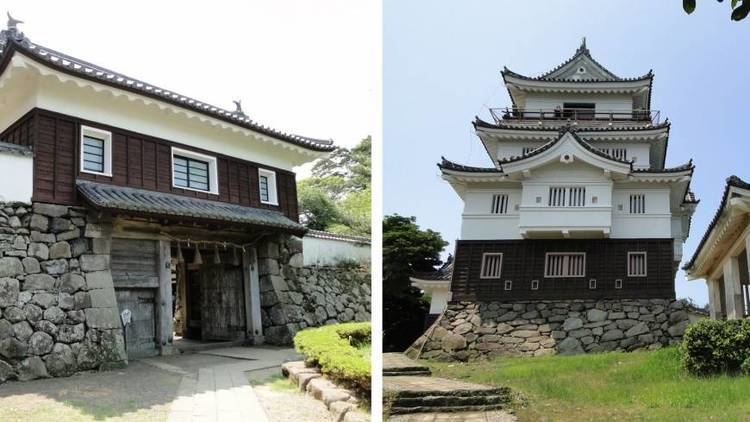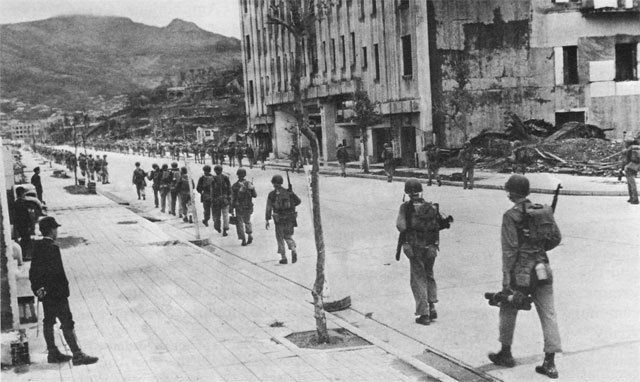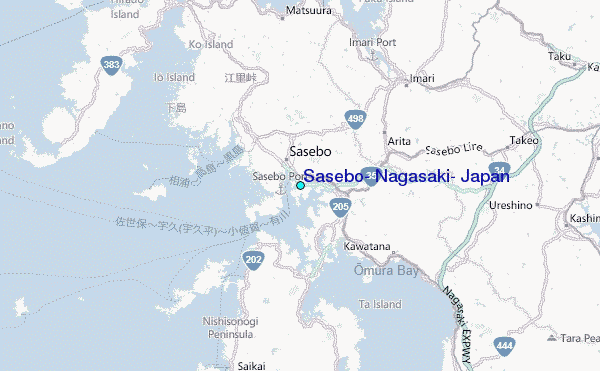Country Japan Area 426.47 km2 | Population 261,101 (2010) Region Kyushu | |
 | ||
Colleges and Universities University of Nagasaki, Nagasaki Prefectural University | ||
Mayor Norio Tomonaga (since May 2009) | ||
Map of Sasebo, Nagasaki
Sasebo (佐世保市, Sasebo-shi) is a core city located in Nagasaki Prefecture, Japan. As of 1 October 2016, the city has an estimated population of 251,417 and a population density of 590 persons per km². The total area is 426.47 km2 (165 sq mi).
Contents
- Map of Sasebo Nagasaki
- Ticonderogaclass guided missile cruiser uss shiloh at sasebo nagasaki 2014
- History
- Mergers
- Economy
- Climate
- Points of interest
- Sister city relations
- References

The city includes a part of Saikai National Park. Located in the southern part of the city is the Dutch-styled theme park Huis Ten Bosch.

Ticonderogaclass guided missile cruiser uss shiloh at sasebo nagasaki 2014
Ticonderogaclass guided missile cruiser uss shiloh at sasebo nagasaki 2014
History

The area of present-day Sasebo was a small fishing village under the control of nearby Hirado Domain until shortly after the start of the Meiji period. Imperial Japanese Navy Admiral Tōgō Heihachirō, when surveying the coasts of northwestern Kyūshū for the site of a navy base, selected his location based on its protected, deep-water harbor, geographic proximity to China and Korea, and the presence of nearby coal fields. Sasebo Naval District, founded in 1886, became the major port for the Japanese navy in its operations in the First Sino-Japanese War and Russo-Japanese War, and remained a major naval base to the end of World War II. Along with the base facilities, the navy also constructed the Sasebo Naval Arsenal, which included major shipyards and repair facilities.
Sasebo City was founded on April 1, 1902. The city which had 206,000 inhabitants in 1945 suffered severe damage by bombing on June 29, 1945 during World War II and was destroyed by 48%. Sasebo was one of the original 17 targets selected for the dropping of the atomic bomb.
After the end of the war, part of the base facilities were taken over by the United States Navy, forming U.S. Fleet Activities Sasebo. Some parts of the base are shared with the Japan Self-Defense Forces, in particular the JMSDF, though the primary base of the JGSDF's Western Army Infantry Regiment is also among the facilities there.
Mergers
Economy
Shipbuilding and associated heavy industries continue to dominate the economy of Sasebo. Adjacent to the naval base is the Sasebo Heavy Industries Co., Ltd. shipyard. The Port of Sasebo has an active fishing fleet, and many oyster and pearl farms are located on the Kujū-ku Islands.
The Mikawachi district has a 400-year-old pottery manufacturing industry.
Sasebo Station is the westernmost station in the JR passenger train system and is about two hours by train from Hakata Station in the city of Fukuoka (via the Midori line) and about two hours from Nagasaki Station in the city of Nagasaki. Across the street from Sasebo Station is the Sasebo Bus Center, which provides connecting service to many local destinations.
Climate
The climate is similar to Norfolk, Virginia. Rainy season lasts from early June to mid-July, and the summer is hot and humid. During the winter, there may be light snowfall and some freezing.
According to the National Oceanic and Atmospheric Administration (NOAA), Sasebo has a humid subtropical climate (Köppen climate classification Cfa) with hot summers and cool winters. Precipitation is significant throughout the year, but is somewhat lower in winter.
Points of interest
Sister city relations
Sasebo has sister-city relations with three places outside Japan and one within the country:
